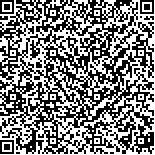下载中心
优秀审稿专家
优秀论文
相关链接
摘要

本文结合中国国家标准大气(GB l920-80)与1976 年美国标准大气, 利用MPM (Millimeter Propagation Model, 毫米波传播模型)、ROS(Rosenkranz)模型和本文提出的改进混合模型(MIX, Mixed)计算大气吸收系数。采用 西北太平洋地区中国与日本16 个无线电高空探测仪836 组大气实测数据(海拔高度、气压、大气温度和湿度), 通 过大气辐射传输模型, 按MWTS/MWHS 的工作参数(中心频率、带宽和波段数目), 模拟大气辐射亮度温度, 用以验 证FY-3A 的MWTS/MWHS 实测辐射亮度温度。比较了MPM、ROS 与MIX 3 种模型的模拟结果, 并用MIX 模型 分析了MWTS/MWHS 多通道大气吸收权重函数。进而通过无线电高空探测仪的大气实测数据与MWTS/MWHS 的 实测多通道辐射亮温数据, 构成统计D 矩阵, 并由此反演2008 年7 月27 日“凤凰”台风西北太平洋地区大气温度和 湿度的3 维分布。
As a China’s second generation of polar-orbitting meteorological satellites, FY-3A (Fen Yun means wind and cloud) was launched on May 27, 2008. The microwave temperature sounder (MWTS) and microwave humidity sounder (MWHS) are first aboard the Chinese FY satellite for the purpose of retrieving atmospheric temperature and humidity profiles. There are four channels of MWTS, i.e. 50.30, 53.596±0.115, 54.94 and 57.29 GHz, with corresponding bandwidths 180, 340, 400 and 330 MHz, respectively, and five channels of MWHS, i.e. dual polarized (V,H) 150, 183.31±1.0, 183.31±3.0 and 183.31±7.0 GHz, which are corresponding to the bandwidths 1000, 500, 1000 and 2000 MHz, respectively. The spatial resolutions of MWTS and MWHS at sub-point are 50/75 km and 15 km, respectively, and the fields of views are 15 and 98 lines, respectively. Both scan modes are cross-track scanning. Based on the algorithms of atmospheric absorption coefficients, i.e. the MPM (Millimeter Propagation Model) and ROS (Rosenkranz’s model), this paper presents a novel MIX (mixed) model for calculation of atmospheric absorption coefficients in the multiple channels of MWTS and MWHS under China National Standard Atmosphere (GB 1920-80) and U.S. Standard Atmosphere, 1976. Using atmospheric radiative transfer with the in situ measurements of 836 radiosonde datasets (including the altitude, pressure, atmospheric temperature and humidity) from 16 sites in China and Japan, multiple channel brightness temperature (Tb) are simulated, and compared with FY-3A MWTS/MWHS observations as good validation. The radiosonde measurements were issued by NOAA/ESRL (National Oceanic and Atmospheric Administration/Earth System Research Laboratory). The simulations with the atmospheric absorption coefficients based on respective MPM, ROS and our MIX algorithms are also analyzed. Data validation shows good performance of the MIX model. The statistical D-matrix is firstly constructed from the MWTS/MWHS Tb data and the corresponding radiosonde measurements, and then is applied to the retrieval of atmospheric temperature and humidity profiles over the northwestern Pacific Ocean during 2008’s Phoenix typhoon. A 3D distribution of the atmospheric temperature and humidity is also presented. Comparison and data fusing of FY-3A and other satellites shall be an interesting mission for future operational service. Large coverage of MWHS can be beneficial to further study of atmospheric parameters retrievals.

